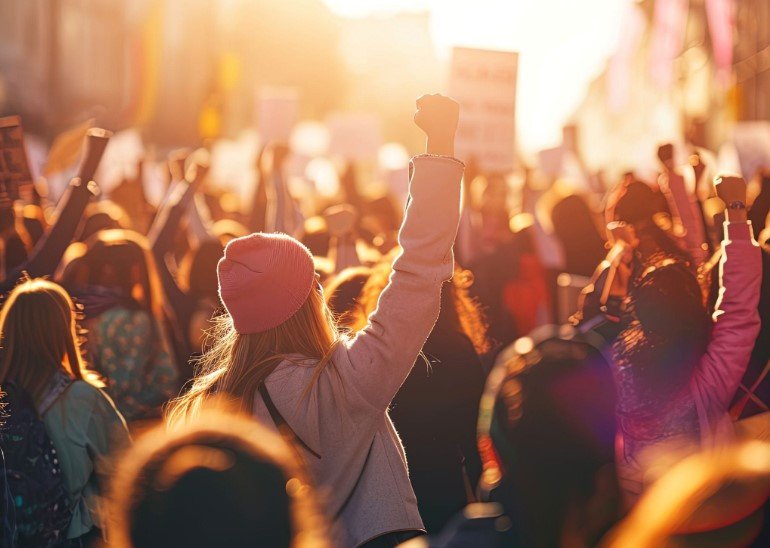Thousands of Israelis flooded the streets of Tel Aviv on August 27, 2025, with over 350,000 people urging the government to seal a ceasefire deal and end the war in Gaza. Protests also spread to Jerusalem and other cities, highlighting growing frustration over hostages still held captive and the ongoing conflict that has claimed countless lives.
Nationwide Calls for Peace Amid Rising Tensions
Protesters gathered in massive numbers at Tel Aviv’s public plaza, waving signs and chanting for an immediate end to the fighting. Many held photos of loved ones taken hostage during the initial attacks in October 2023. The demonstrations started early in the day, blocking major highways like the Ayalon Highway, and continued into the evening as a show of unity against the government’s stance.
This wave of unrest comes as mediators from Qatar, Egypt, and the United States push for talks to resolve the deadlock. Families of hostages expressed deep anger, accusing Prime Minister Benjamin Netanyahu of prioritizing military goals over saving lives. One protester in Jerusalem, Michal Gomel Blank, voiced the common sentiment: “We need to seal the deal, bring all hostages home, and stop the war.”
The protests reflect a broader public shift. Recent polls show that a majority of Israelis now support a ceasefire if it means freeing the remaining captives. Organizers timed the actions to coincide with a cabinet meeting, hoping to pressure leaders into action.

Gaza’s Humanitarian Crisis Fuels Outrage
As protests raged in Israel, reports from Gaza painted a grim picture that added fuel to the demonstrators’ demands. On the same day, officials reported that ten Palestinians, including two children, died from starvation in the past 24 hours. This brings the total starvation deaths to 313 since the blockade tightened, with 119 of those being children.
Israeli forces continued operations, killing at least 76 people in attacks across Gaza. Witnesses described strikes on areas where people searched for food, worsening the famine. Only 14 percent of essential food supplies entered Gaza last month, according to local authorities.
Humanitarian groups warn that the situation could deteriorate further without a truce. The war, now in its 691st day, has displaced millions and destroyed infrastructure. Protesters in Tel Aviv linked their calls for peace to these horrors, arguing that a ceasefire is the only way to halt the suffering on both sides.
- Key impacts of the ongoing blockade: Limited access to water, medicine, and fuel has led to widespread disease outbreaks.
- Rising death toll: Over 40,000 Palestinians have been killed since the conflict escalated, per health ministry figures.
- Economic strain: Gaza’s economy has shrunk by 80 percent, leaving most residents reliant on aid.
Attacks on Journalists and Global Backlash
The protests also highlighted recent controversies, including Israel’s strike on Nasser Hospital in Gaza. The attack killed 21 people, among them five journalists, drawing sharp criticism worldwide. Israel claimed the target was a Hamas surveillance camera, but provided no proof, leading to accusations of targeting media workers.
In response, a Reuters photojournalist resigned, slamming Western media for repeating unverified claims. She noted that more journalists have died in Gaza over two years than in major wars like World War II or Vietnam combined. Human Rights Watch added that U.S. involvement in providing intelligence could make American personnel liable for war crimes.
These events have amplified global calls for accountability. Protesters in Israel echoed this, demanding their government address the international outcry and pursue peace.
| Incident | Date | Casualties | Details |
|---|---|---|---|
| Nasser Hospital Strike | August 26, 2025 | 21 killed, including 5 journalists | Double-tap attack; Israel claims targeted Hamas asset |
| Gaza Starvation Deaths | August 27, 2025 | 10, including 2 children | Part of 313 total since blockade intensified |
| West Bank Raids | August 27, 2025 | 80 injured in Nablus; 58 in Ramallah | Israeli forces detained 3; child required surgery |
West Bank Violence Adds to the Pressure
While focus remained on Gaza, unrest in the occupied West Bank intensified the protests’ message. Israeli raids in Nablus injured at least 80 Palestinians, following similar actions in Ramallah where 58 people were hurt, including by live fire. A child needed surgery after being shot.
U.S. Senators Chris Van Hollen and Jeff Merkley visited a church in Taybeh attacked by settlers, calling for an end to such violence. Senator Van Hollen stressed the need to stop the Gaza war and settler attacks to bring stability.
These incidents show how the conflict spills over, affecting daily life and fueling demands for a comprehensive deal. Protesters argue that ignoring the West Bank ignores the bigger picture of peace.
Government Response and Future Outlook
Prime Minister Netanyahu’s cabinet met amid the chaos, but no immediate breakthrough emerged. Officials insist any deal must ensure Israel’s security and dismantle Hamas threats. Critics, including opposition leaders, say this hardline approach sabotages negotiations.
Looking ahead, mediators plan more talks in the coming days. The protests could grow if no progress is made, with organizers vowing to keep up the pressure. Public support for a truce has surged, potentially forcing a policy shift.
As the world watches, these demonstrations underscore the human cost of delay. Share your thoughts on the protests or the path to peace in the comments below, and spread this article to raise awareness.
